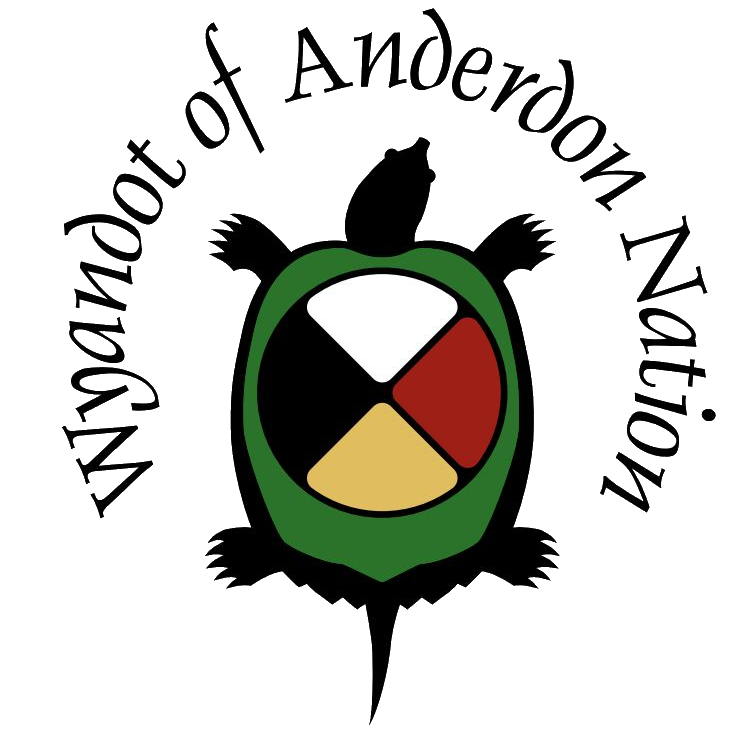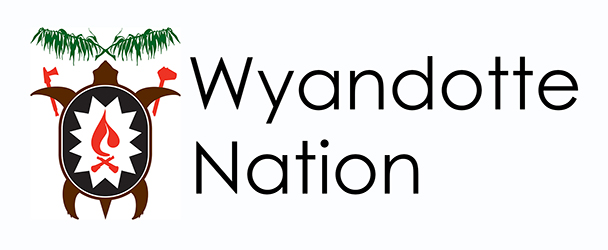“kwe: kwe:” – “Welcome!”
Our Mission
We the Wyandot of Anderdon, inspired by our proud and documented Native American heritage, pledge to perpetuate and share our Native values and culture for the purpose of establishing and promoting quality tribal management and financial stability, economic and education opportunities, cultural traditions, and history awareness, and to provide services and entitlements for the betterment of our past, present and future generations, as well as other Native cultures and local communities.
Our History
A Short History of the Wyandot of Anderdon
The Wyandot of Anderdon Nation can trace its ancestry, through church and government documents, back to before the 1600s and were variously known as Hurons, Tionnontatés, Neutrals and Petuns. These groups existed, at various times, in areas north of Lake Erie, north of Lake Ontario and west of Quebec. Exposure to early European settlers caused the Nation’s population to drop dramatically due to small pox and other epidemics. The remaining citizens were forced westward by attacks from the Haudenosaunee tribes in the 1640s. Some Wyandots migrated as far as Michilimackinac in Michigan, before eventually coming back to Fort Pontchartrain, in Detroit, around 1701. The Wyandots settled in areas along both sides of the Detroit River, on islands like Bois Blanc Island and Grosse Ile and the south side of Lake St. Clair.
In 1790, a large group of 200 Wyandots began settling on 23,330 acres of land deeded to them by treaty with the British government, known as the Anderdon Reserve, located near Amherstburg, Ontario. This area was part of the original Michigan territories, that came before the formation and establishment of the United States or Canada. The Wyandot moved freely up and down the Detroit River and about the islands, villages and towns of southeast Michigan.
Before the move to the Anderdon Reserve, the Wyandot were a matriarchal society led by the clan mothers. They lived in long house villages. They spoke an Iroquoian dialect. They were friends with the French fur traders and Jesuit priests. They planted corn, beans and squash to augment their diet of fish and deer. Bison still roamed parts of lower Michigan during that time.
When the Wyandots came to the Anderdon Reserve they built cabins, farmed the land and had a huge stone quarry. The clan mother system was still around but contact with the French, English and Jesuits missionaries had already begun to erode that system, gradually introducing patriarchal norms. The Wyandot built the Wyandotte Indian School in 1846. The tribe paid for their own teachers until there were no more Wyandot children left on the Reserve or in the neighborhood. The school was closed in 1906.
Pressure created by settlers who were moving west and demanding land led the British to reduce the size of the Reserve. In 1836 a new treaty with the British reduced the Anderdon Reserve to 7770 acres and the stone quarry. As western Ontario became more populated, and after several coercive treaties and Acts of the British government, many Wyandot left the Anderdon Reserve to search for employment and new homes in the surrounding towns and villages. In 1837, Michigan became a state and many Wyandot sold their land on the Anderdon Reserve, and relocated to Michigan villages in Monguagon Township, Brownstown, Wyandotte and Gibraltar. Some Wyandot stayed in Canada but gave up their Anderdon Reserve property in exchange for Canadian Citizenship.
The push west by settlers and the U.S. government sought to remove all Indians to west of the Mississippi River. President Andrew Jackson signed into law the Indian Removal Act of 1830 to forcibly move the Indians west. Under the removal act, in 1842-1843, many Anderdon relatives who lived in Sandusky, Ohio area were removed to Kansas and further to Oklahoma. The local Michigan Wyandots of Anderdon living in the United States were now immersed in their neighborhoods. They hid their native heritage and were not removed.
The Indian Civilization Act of 1819, which led to the Indian boarding schools of 1860. Once again, the local Michigan Wyandots of Anderdon hid their native heritage for fear that their children would be taken from their homes to one of these Indian Schools to “remove the Indian”. Unfortunately, boarding schools and the removal of children lasted as late as 1978.
Today, the Wyandot of Anderdon Nation, a Michigan based 501(c)3 organization, is reviving our culture and language. We are completing a three-year Administration for Native Americans (ANA) Grant, called the Seven Generations Project that will end in 2025. The Seven Generations Project has helped us create a large database of archived ancestral documents. We also offer Wendat language, history, plant and craft classes and we are educating our citizens on their ancestry.
Wyandot Nations of North America
Click below to visit the websites of other Wyandot Nations.





